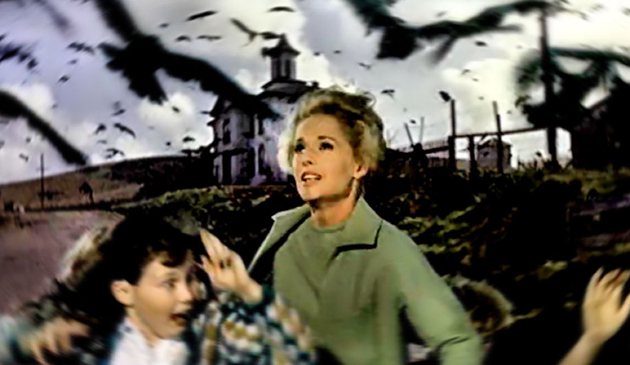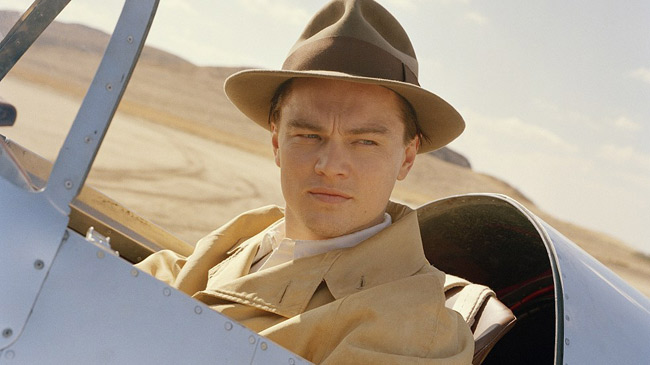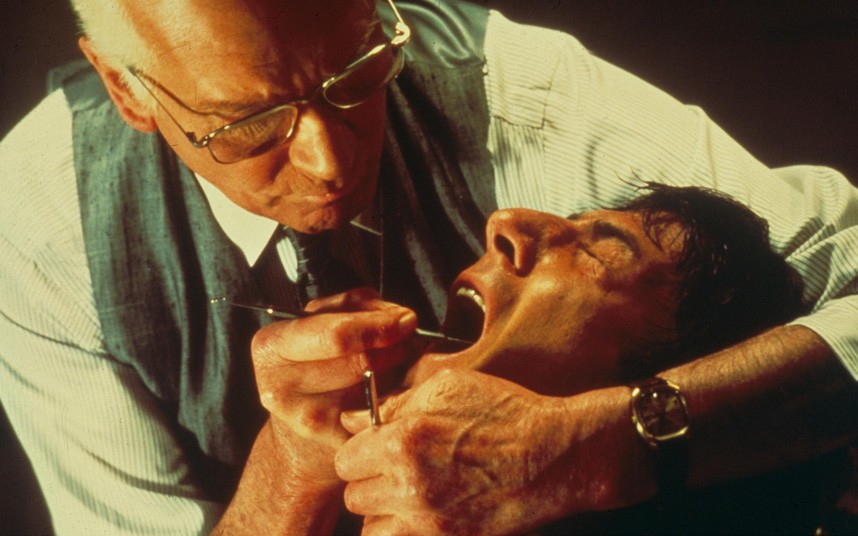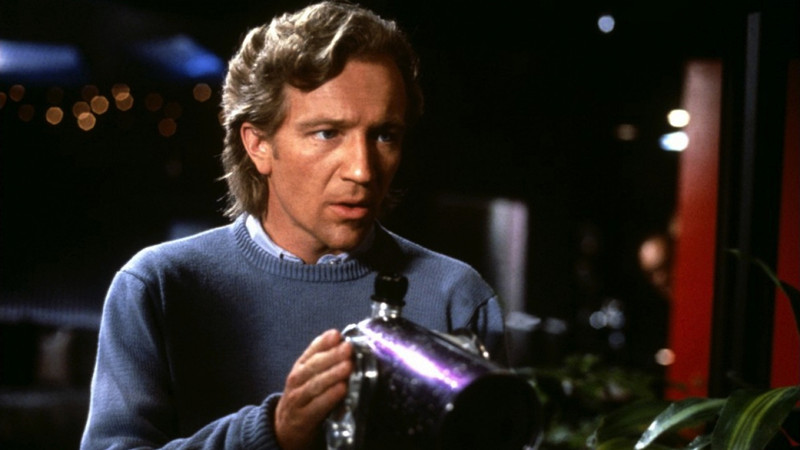5. The Birds (1963)

Alfred Hitchcock’s groundbreaking horror-thriller, adapted from the 1952 novelette from Daphne du Maurier (one of Hitch’s favorite writers, both “Rebecca” and “Jamaica Inn” had previously became wonderful adaptations for the Master of Suspense), casts Tippi Hedren, Rod Taylor, Suzanne Pleshette, and Jessica Tandy in the small seaside town of Bodega Bay, California, just as a series of sudden, unexplained, and increasingly violent bird attacks ensue.
The following human drama, sharp social commentary, and unrelenting dread was enough to give even the most jaded of audience members a serious case of ornithophobia, and no one who’s ever seen The Birds has ever looked at an inconspicuous flock of birds the same way ever again. Don’t miss it.
4. The Aviator (2004)

Martin Scorsese had been talking about doing this particular project for years, and this far-reaching, lushly produced and entirely emphatic biopic of the King of Phobias, Howard Hughes (Leonardo DiCaprio) is a success on so many levels (the plane crashing sequence is an absolute stunner).
But, for the purposes of this list, The Aviator offers a fascinating look at anxiety, isolation, panic-attacks, paranoia, and the alienation of severe and utterly out-of-control obsessive–compulsive disorder. While Hughes’s well-documented obsession with germs and cleanliness has been the butt of many jokes and Hollywood hearsay, it’s hard to see the humor here, as we see how it derailed such a sharpened and creative mind.
“What a sad man. What brief glory. What an enthralling film,” wrote Roger Ebert, in his four star review, adding “There’s a match here between Scorsese and his subject, perhaps because the director’s own life journey allows him to see Howard Hughes with insight, sympathy – and, up to a point, with admiration.”
3. Marathon Man (1976)

Dentophobia––the fear of the dentist or getting dental work done–is brought to the anguishing and agonizing fore in John Schlesinger’s devilish action thriller from 1976, Marathon Man.
Laurence Olivier is absolutely diabolical as Nazi war-criminal turned dental surgeon from Hell, Dr. Christian Szell, and the infamous torture sequence wherein Szell utilizes his terrible talents to get information from Thomas Babington “Babe” Levy (Dustin Hoffman) is impossible to sit through without squirming.
“Is it safe?” repeats Szell with a high-speed drill in hand as Babe twists in a dentist’s chair. This sequence is sadistically cruel and shockingly effective when given how little we actually see. We know Babe has cavities, fillings, no anesthetic, and we see the tools at Szell’s disposal.
“Is it safe?” Hell no.
2. Body Double (1984)

Brian De Palma gleefully toys with his favorite Hitchcockian themes of obsession and voyeurism in this erotically-charged overture, the subversive, sleek, and deliberately trashy Body Double.
Jake Scully (Craig Wasson) is a B-actor of bad horror films now fallen on hard times, mostly due to his crippling claustrophobia. His actor pal Sam Bouchard (Gregg Henry) takes pity on him and hooks him up with a house sitting gig at an ultra-modern home in the Hollywood Hills. Before you know it Jake is spying on his sexy neighbor who does salacious stripteases like clockwork each night, in front of her bedroom window, curtains wide open for easy peeping.
Using every stylish flourish in his expert attaché, the thriller that unfolds is bounteous with twists and turns, astonishing reveals, fearsome flashbacks, rakish innuendo, and mounting tensions. Body Double keeps piling on the peril and the panache and then unleashes a gobsmacking turn late in the film from Melanie Griffith as porn star Holly Body. Holly is somehow stitched into the labyrinthine yet airtight plot that keeps going too far.
As sleazy objet d’art and enjoyable escapist pleasure, Body Double is De Palma’s most indulgent delight. The numerous sequences wherein Jake’s claustrophobia yanks the proverbial rug out from under him adds immeasurably to the excitement and the peril. It just doesn’t get any sleeker, sexier, or risqué as this subversive chef d’oeuvre. Don’t miss it.
1. Vertigo (1958)

Alfred Hitchcock’s acclaimed study of obsession, phobia, sexual desire, and identity takes its deserved spot at the top of this list, and with several good reasons.
James Stewart is astounding and despicable as neurotic San Francisco police detective John “Scottie” Ferguson in Hitch’s surprisingly cynical take on obsession. As Scottie’s psychological instability takes the thrust of the narrative –- a tactic that initially alienated audiences and even Hitchcock devotees back in the day -– focusing instead on his guilt and exploitation angle instead of the wandering wife/suicide case he started out on. Scottie, who possesses a paralyzing fear of heights, turns in his badge after a routine case results in the death of a fellow officer from a fatal fall.
Hitchcock chose to eschew studying suspense and instead zoomed in on themes of identity, unhealthy obsession, phobia, and sexual desire as Scottie falls for suicidal dream girl, Madeleine Elster (Kim Novak). Voyeurism, guilty conscience, doppelgänger duplicity, and wry humor add to the aloof mystery behind what many consider to be Hitchcock’s crown jewel.
Maybe Martin Scorsese put it best; “Whole books could be written about so many individual aspects of Vertigo –– its extraordinary visual precision, which cuts like a razor to the soul of its characters; it’s many mysteries and moments of subtle poetry; its unsettling and exquisite use of color; and its extraordinary performances…”
Honorable Mention: Jaws (1975, directed by Steven Spielberg), Carrie (1976, directed by Brian De Palma), High Anxiety (1977, directed by Mel Brooks), Raiders of the Lost Ark (1981, directed by Steven Spielberg), Cujo (1983, directed by Lewis Teague), Broadcast News (1987, directed by James L. Brooks), Arachnophobia (1990, directed by Frank Marshall), As Good As it Gets (1997, directed by James L. Brooks), Spider (2002, directed by David Cronenberg), Gravity (2013, directed by Alfonso Cuarón), The Walk (2015, directed by Robert Zemeckis), It (2017, directed by Andy Muschietti).
Author Bio: Shane Scott-Travis is a film critic, screenwriter, comic book author/illustrator and cineaste. Currently residing in Vancouver, Canada, Shane can often be found at the cinema, the dog park, or off in a corner someplace, paraphrasing Groucho Marx. Follow Shane on Twitter @ShaneScottravis.